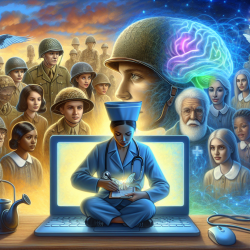Introduction
In the ever-evolving landscape of special education and online therapy, staying informed about cutting-edge research and methodologies is crucial for practitioners. One such promising approach is the Cultural-Historical Activity Theory (CHAT), which provides a framework for understanding complex psychological processes such as the sense of agency (SoA) and sense of ownership (SoO). A recent research article titled "Between Meanings and Senses-Making Spaces: Agency and Ownership Emergence Formalization from Cultural-Historical Activity Theory Position, for an AI-Friendly Model" offers insights into how CHAT can be applied to enhance practitioner skills and improve therapy outcomes.
Understanding CHAT and Its Implications
CHAT, rooted in the work of Vygotsky, emphasizes the sociohistorical context of mental development and the role of activity in shaping consciousness. The theory suggests that psychological processes are not isolated phenomena but are deeply intertwined with social interactions and cultural tools. This perspective can be particularly beneficial for practitioners working with students who have diverse needs, as it encourages a holistic understanding of the individual's experiences and challenges.
Applying CHAT in Practice
The research article highlights the importance of differentiating between the space of meanings and the sense-making space. By doing so, practitioners can better understand the emergence of agency and ownership in their students. This understanding is crucial for developing personalized therapy plans that cater to the unique needs of each student.
Here are some practical steps practitioners can take to implement CHAT principles:
- Focus on Activity: Encourage students to engage in meaningful activities that align with their interests and goals. This approach helps in the development of agency and ownership, as students feel more connected to their actions and outcomes.
- Utilize Cultural Tools: Incorporate cultural and social tools, such as language and symbols, into therapy sessions. These tools can facilitate communication and understanding, enabling students to express themselves more effectively.
- Promote Social Interaction: Create opportunities for students to interact with peers and adults in various settings. Social interactions are key to developing a sense of self and understanding one's role in the community.
Encouraging Further Research
While the research article provides a solid foundation for applying CHAT in practice, it also opens the door for further exploration. Practitioners are encouraged to conduct their own research and experiments to tailor CHAT principles to their specific contexts. By doing so, they can contribute to the growing body of knowledge and improve therapy outcomes for their students.
Conclusion
Incorporating CHAT into online therapy practices can lead to more effective and personalized interventions for students with diverse needs. By understanding the emergence of agency and ownership through the lens of CHAT, practitioners can create supportive environments that foster growth and development. For those interested in delving deeper into this topic, the original research paper provides a comprehensive exploration of these concepts.
To read the original research paper, please follow this link: Between Meanings and Senses-Making Spaces: Agency and Ownership Emergence Formalization from Cultural-Historical Activity Theory Position, for an AI-Friendly Model.










